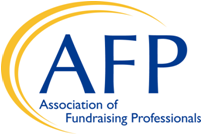These are challenging times for fundraising professionals. Fewer people are giving to charities. Donor retention rates continue to fall. Volunteerism is down which negatively affects current and planned giving.
Despite those challenges, and more, many nonprofit organizations continue to ignore the one simple thing that would help them retain more  supporters and raise more money. It’s an essential, though often ignored, step in the fundraising process.
supporters and raise more money. It’s an essential, though often ignored, step in the fundraising process.
At the heart of February rests a special time for many: Valentine’s Day. It’s a celebration of love. Unfortunately, when it comes to how nonprofit organizations show love to donors, at this or any other time of year, many do a poor job. That’s the opinion of veteran fundraiser Mark Chilutti, CFRE, Assistant Vice President of Development at Magee Rehabilitation Hospital – Jefferson Health.
Mark wants to help his fellow fundraisers do a more effective job when it comes to Donor Stewardship. So, he will be presenting “New Trends in Donor Stewardship: Saying Thank You All Year Long” at the Association of Fundraising Professionals International Conference, April 2, 2019, 10:15-11:30 AM. Mark notes:
We all know that relationship building is the key to our success as fundraisers and this session will provide participants with unique and creative ways to stay in touch with donors on a year-round basis. Real life examples will include successful Board thank you call scripts, creative pictures and notes about donors’ gifts in action, how to create a Stewardship/Impact Report, and more.”
Now, Mark generously provides us with a preview of his upcoming presentation along with three powerful tips that you can immediately put to use to strengthen your development program. I thank Mark for sharing his helpful insights here:
I’m passionate about donor stewardship. I think the reason this topic is so important to me is because I have seen more bad examples of donor stewardship than good ones. I also believe that stewardship is a lost art. We often hear that the next time the donor hears from a fundraiser is when the fundraiser is asking them to give again.
Because I work at a small place, our major donor pool isn’t very large. I have always believed that after working hard to secure a gift, I have to then channel that same energy into letting my donors know just how much I appreciate them and the impact that their gift has made for our patients, programs, and services. I do this in a variety of ways, and they all are easy and inexpensive!
We always strive to get the “official” thank you out within 72 hours, but that’s just the beginning. Depending on the size of the gift, the donor might also receive an email, a card, a call, or sometimes; all three. My CEO prefers to send handwritten cards, while my Board Chairman is happy to pick up the phone. They both are effective and appreciated, which is why I struggle to understand why more organizations don’t do this.
My work doesn’t end there, though, and I use simple creative ways to stay in touch all year. While strolling through the hospital, I’ll often snap a quick picture of a patient using a piece of equipment or a donor-funded program happening, and I can then send that in an email saying, “Saw the equipment you funded being used by a patient today and just wanted to say thanks again!” This type of email usually gets a quick response telling me I made their day or how good they feel to know their gift made an impact.
I also make sure that staff outside of the Development Department is involved in the thank you process, too, by having them write cards or take pictures that I can send to donors. We also engage patients and family members in this process, and whatever they write is so much more meaningful, as it comes from the heart.
These are just a few of the tips I will present in my session at AFP ICON as I share things that an organization of any size can do easily to make their donors feel appreciated. My hope is that participants in the session will be taking notes and taking lots of ideas back home to put into place right away.
If you won’t be at AFP ICON, I’ll leave you with these three easy tips to help you raise your game in Donor Stewardship:











 At times, elections have had an effect on the giving of some individuals. For example, in 2008 when Barack Obama was elected, some major donors feared that he would secure a 28 percent cap on tax deductions.
At times, elections have had an effect on the giving of some individuals. For example, in 2008 when Barack Obama was elected, some major donors feared that he would secure a 28 percent cap on tax deductions.




